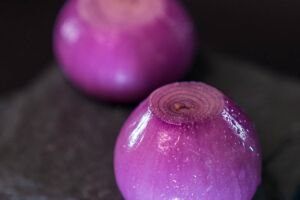What Is Millets?
Health Benefits of Millets:
In recent years, there has been a resurgence of interest in traditional and nutrient-rich grains, and one such group of grains that is gaining popularity is millets. Millets, often referred to as “super grains,” are a diverse group of small-seeded grasses that have been cultivated for thousands of years. Packed with essential nutrients, millets offer numerous health benefits and contribute to sustainable agriculture. In this article, we will explore the wonders of millets, highlighting their nutritional value, health benefits.
Millets are a treasure trove of essential nutrients. They are rich in dietary fiber, protein, vitamins (such as niacin, thiamin, and vitamin B6), and minerals (including iron, magnesium, and phosphorus). These grains also contain antioxidants and phytochemicals that contribute to their overall health-promoting properties.
Weight Management and Digestive Health:
The high fiber content in millets makes them an excellent choice for weight management and promoting healthy digestion. The fiber aids in maintaining satiety, reducing the risk of overeating, and regulating bowel movements. Regular consumption of millets can help prevent constipation, promote a healthy gut, and support overall digestive well-being.
Heart Health and Cholesterol Management:
Millets are heart-friendly grains. They contain compounds like magnesium, potassium, and plant sterols that have been associated with lowering blood pressure and reducing the risk of cardiovascular diseases. Additionally, the soluble fiber in millets can help lower LDL (bad) cholesterol levels while promoting the healthy HDL (good) cholesterol.
Blood Sugar Regulation:
For individuals with diabetes or those aiming to manage blood sugar levels, millets offer a low glycemic index alternative to refined grains. The slow digestion and absorption of millets help prevent rapid spikes in blood sugar levels, making them suitable for maintaining stable glucose levels.
Gluten-Free and Celiac-Friendly:
Millets are naturally gluten-free, making them a valuable option for individuals with celiac disease or gluten sensitivity. They can be used as a substitute for wheat and other gluten-containing grains in various recipes, opening up a world of possibilities for those on a gluten-free diet.
Sustainable Agriculture:
Millets are environmentally friendly crops. They require minimal water and are highly adaptable to diverse agro-climatic conditions. Their cultivation helps conserve water resources and promotes biodiversity. By incorporating millets into our diet, we contribute to sustainable agriculture practices and support local farmers.
What Are The Types Of Millets?
Millets are a group of small-seeded grasses that belong to the Poaceae family. They are commonly referred to as “super grains” and are considered ancient grains due to their long history of cultivation. The term “millets” encompasses several different varieties, each with its unique characteristics. Here are some of the commonly consumed millets:
Pearl Millet (Bajra):

Pearl millet is one of the most widely cultivated and consumed millets. It has a rich nutty flavor and is known for its high protein and fiber content. Pearl millet is commonly used in porridges, flatbreads, and as a base for savory dishes.
Foxtail Millet (Kangni):

Foxtail millet is a small-grained millet with a mild, slightly nutty taste. It is often used as a rice substitute and can be cooked as a pilaf or added to salads and soups.
Finger Millet (Ragi):

Finger millet is a highly nutritious millet known for its dark color and earthy flavor. It is rich in calcium, iron, and amino acids, making it beneficial for bone health and overall nutrition. Finger millet is commonly used to make porridges, dosas (pancakes), and baked goods.
Sorghum (Jowar):

While sorghum is technically a type of grass, it is often categorized as a millet due to its similar nutritional profile and usage. Sorghum is gluten-free and has a mild flavor. It can be ground into flour and used in various recipes, including bread, porridge, and as a grain substitute.
Proso Millet (Barri, Chena):

Proso millet is a small, round grain with a mild flavor. It cooks quickly and can be used as a rice substitute, added to salads, or used in soups and stews.
Barnyard Millet (Sanwa, Jhangora):

Barnyard millet has a light, fluffy texture and a mild taste. It is often used as a rice substitute, and its versatility allows for a wide range of preparations, including pilafs, upma, and porridges.
These are just a few examples of the various millets available. Each millet variety has its unique nutritional composition and culinary uses, making them a versatile addition to a healthy diet.
Which Millet Is Very Good For Health?
When it comes to choosing a highly nutritious millet, there is one that stands out for its numerous health benefits – foxtail millet. Foxtail millet, scientifically known as Setaria italica, is an excellent choice for promoting overall well-being. Here’s why foxtail millet is considered good for health:
1. Nutritional Value: Foxtail millet is rich in essential nutrients such as protein, dietary fiber, vitamins (including niacin, thiamine, and riboflavin), and minerals (such as iron, calcium, and magnesium). These nutrients play vital roles in maintaining optimal health.
2. Low Glycemic Index: Foxtail millet has a low glycemic index (GI), meaning it releases glucose into the bloodstream at a slower rate. This quality helps regulate blood sugar levels and can be beneficial for individuals with diabetes or those looking to manage their weight.
3. Gluten-Free: Foxtail millet is naturally gluten-free, making it an ideal grain for individuals with celiac disease or gluten sensitivities. It provides a safe and nutritious alternative to wheat-based products.
4. Heart Health: Foxtail millet contains high levels of antioxidants and phytochemicals, which have been associated with reducing the risk of cardiovascular diseases. Additionally, its dietary fiber content aids in lowering cholesterol levels, promoting a healthy heart.
5. Digestive Health: The dietary fiber found in foxtail millet supports digestive health by promoting regular bowel movements, preventing constipation, and maintaining a healthy gut microbiome.
6. Weight Management: Foxtail millet is a great addition to a weight loss or weight management plan. Its high fiber content provides a feeling of fullness, curbing hunger pangs and reducing calorie intake.
7. Versatility: Foxtail millet is a versatile grain that can be used in various culinary preparations. It can be cooked and enjoyed as a rice substitute, used in porridges, salads, soups, and even in baking.
Finally, we can say Foxtail millet is an excellent choice for promoting good health due to its nutritional value, low glycemic index, gluten-free nature, and the array of health benefits it offers. Adding this nutritious grain to your diet can contribute to a balanced and wholesome lifestyle.
How To Eat Millets?
Millets can be incorporated into your diet in various ways, offering a versatile and nutritious addition to your meals. Here are some popular methods for preparing and consuming millets:
Millet Cook as a Grain:
Millets can be cooked and enjoyed as a replacement for rice or other grains. Rinse the millet grains thoroughly and cook them with water or broth using a ratio of 1:2 (1 part millet to 2 parts liquid). Simmer the mixture until the millet becomes tender and absorbs the liquid. Cooked millet can be served as a side dish, in pilafs, or used as a base for various recipes.
Millet Porridge Recipe:
Millet porridge is a wholesome and nourishing breakfast option. To make millet porridge, cook the millet grains with water or milk until they reach a creamy consistency. You can add sweeteners like honey or maple syrup, along with fruits, nuts, or spices like cinnamon for added flavor.
Baking Millet Flour:
Millet flour or millet flakes can be used in baking recipes. Millet flour can replace a portion of the all-purpose flour in muffins, bread, pancakes, and cookies, adding a nutty flavor and nutritional boost. Millet flakes can be used as a topping for baked goods or incorporated into granola bars and cereal bars.
Millet Flatbreads Recipe:
Millets such as finger millet (ragi) and pearl millet (bajra) are commonly used to make flatbreads. Mix the millet flour with water and knead it into a dough. Flatten the dough into thin discs and cook them on a griddle or pan until they are cooked through. These flatbreads can be enjoyed with curries, chutneys, or as wraps.
Millet Salads Recipe:
Millets can be added to salads to increase their nutritional content and add a pleasant texture. Cook the millet grains and let them cool. Mix them with vegetables, herbs, dressing, and other desired ingredients to create a flavorful and nutritious salad.
Soups and Stews Recipe:
Millets can be added to soups and stews as a grain component. Cook the millet separately or directly in the soup/stew to enhance its flavor and thickness. Millets contribute to a hearty and satisfying meal.
Remember to adjust the cooking time and liquid ratio based on the specific type of millet you are using, as different varieties may require slight variations in preparation. Additionally, feel free to experiment with spices, herbs, vegetables, and other ingredients to create unique and delicious millet-based dishes that suit your taste preferences.
Conclusion:
Millets are not just ordinary grains; they are nutritional powerhouses that offer an array of health benefits. From aiding in weight management and promoting digestive health to supporting heart health and blood sugar regulation, millets have earned their reputation as superfoods. Moreover, their gluten-free nature and sustainable cultivation practices make them a win-win choice for individuals and the environment.
Incorporating millets into your diet is easy. They can be used in a variety of recipes, including porridges, salads, pilafs, and baked goods. Explore the diverse range of millets available, such as pearl millet, foxtail millet, finger millet, and more, and experiment with different preparations to find your favorites.
Embrace the power of millets and embark on a journey towards better nutrition, improved well-being, and a sustainable future. Start enjoying the goodness of these ancient grains and experience the incredible benefits they offer.















